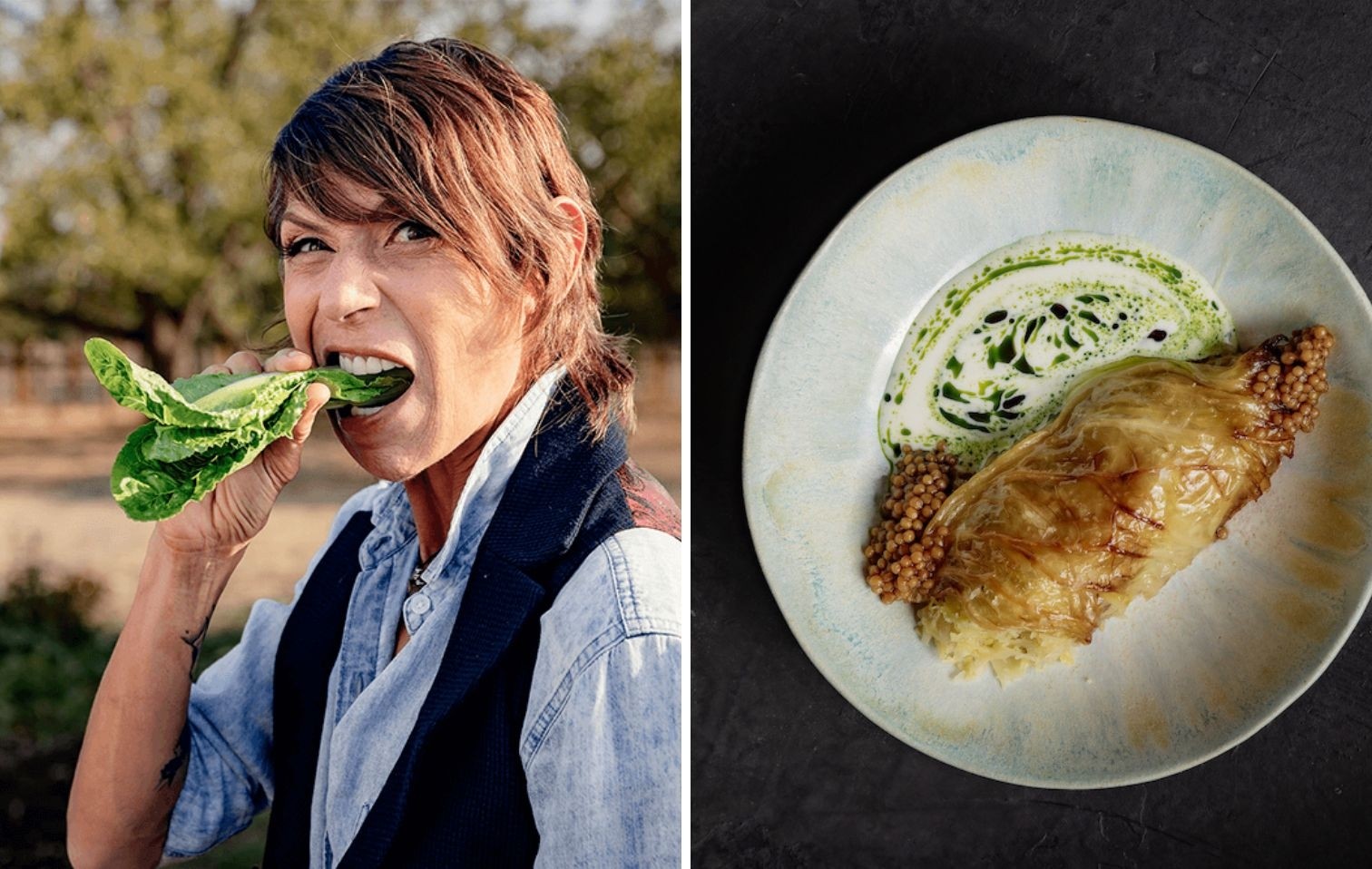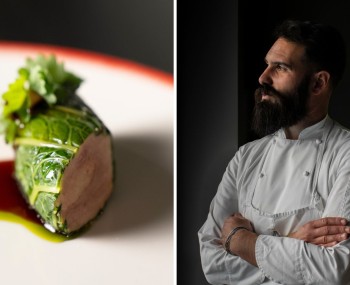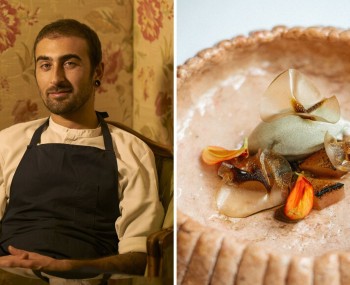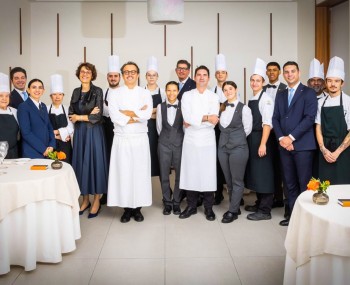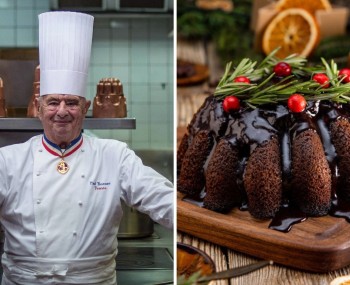Controlled fermentation, browning, baking and accompanying sauce to recreate the effect of meat: Dominique Crenn's roasted cabbage brings the invisible potential of the vegetable to light.
Recipe and photos taken from the Masterclass website
The Dish
It is no mystery how from the (seemingly) humblest ingredients came some of the most impactful recipes in history. Just think of the fact that, even today, a spaghetti al pomodoro beats any ultra-elaborate sauce in popularity and spread, or the numerous preparations made from stale bread, preserved vegetables and secondary animal cuts that continue to thicken cookbooks at all latitudes. Three-starred Domique Crenn, a recordwoman who has always been attentive to the minimal vegetable world, seems to be moving from this very consideration to launch a simple roasted cabbage into the orbit of modern gastronomy. Cabbage that becomes -oyes, oyes- almost steak by treatment, degree of processing and final flavor. “I would call it one of the most underrated products,” she says to the microphones of Masterclass, from which the recipe we quote below comes.

“It is one of the typical first fruits of Brittany, where I grew up, and that's already why I love it." Usually offered in salads, here it is assimilated into protein to extract the invisible nuances of texture and organoleptic depth. Thus, natural flavors evolve through lactofermentation (in short, a process by which lactobacilli act on raw vegetables); shrewdly cut “thick slices” resemble a fillet; browning precedes baking, slowly transforming the fiber to tenderize it. “And in the end that portion of cabbage, from a modest component of the garden, on the plate will become a queen,” the great cook winkingly concludes.
The recipe
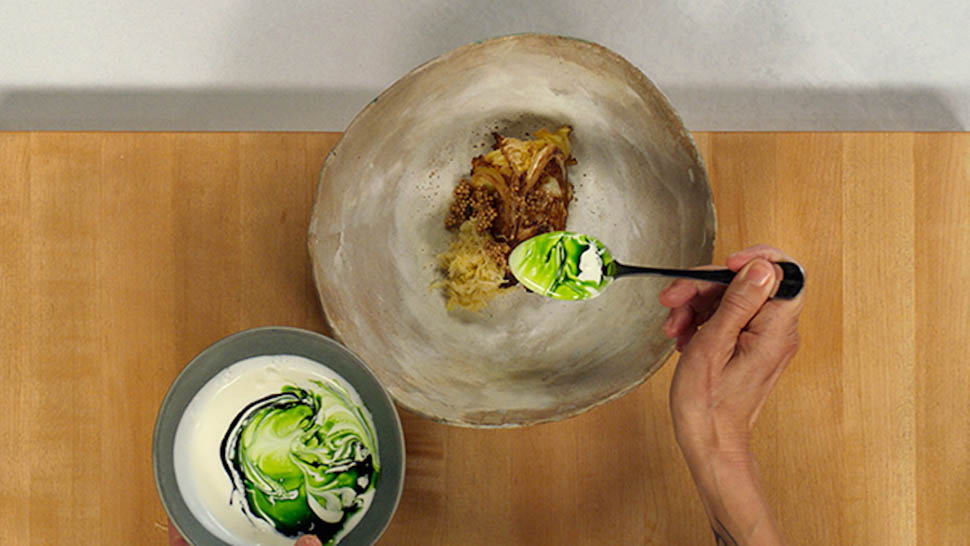
Roasted cabbage with sauerkraut, pickled mustard seeds and creamy parsley sauce by Dominique Crenn
Ingredients
For the sauerkraut
- 1 medium savoy cabbage
- Kosher salt
- 1 tablespoon sherry vinegar
- Lemon juice to taste
- Freshly ground black pepper to taste
For the browned and roasted cabbage
- 1 medium savoy cabbage or other kale
- Grapeseed oil (for greasing pans)
- 2 cloves of garlic, peeled
- 1 bunch of thyme
For the parsley oil
- 200 grams of grape seed oil
- 100 grams flat-leaf parsley, cleaned and chopped
For the pickled mustard seeds
- 100 grams of yellow mustard seeds
- 30 grams of Champagne vinegar or rice vinegar
- 30 grams of sherry vinegar
- 20 grams granulated sugar
- 3 grams of kosher salt
For the parsley oil crème fraîche sauce and finish
- 2 tablespoons fermented cabbage juice
- 500 grams fresh cream
- 1 tablespoon sherry vinegar
- 1 lemon, cut into wedges
- Fleur de sel or kosher salt to taste
- Freshly ground black pepper to taste
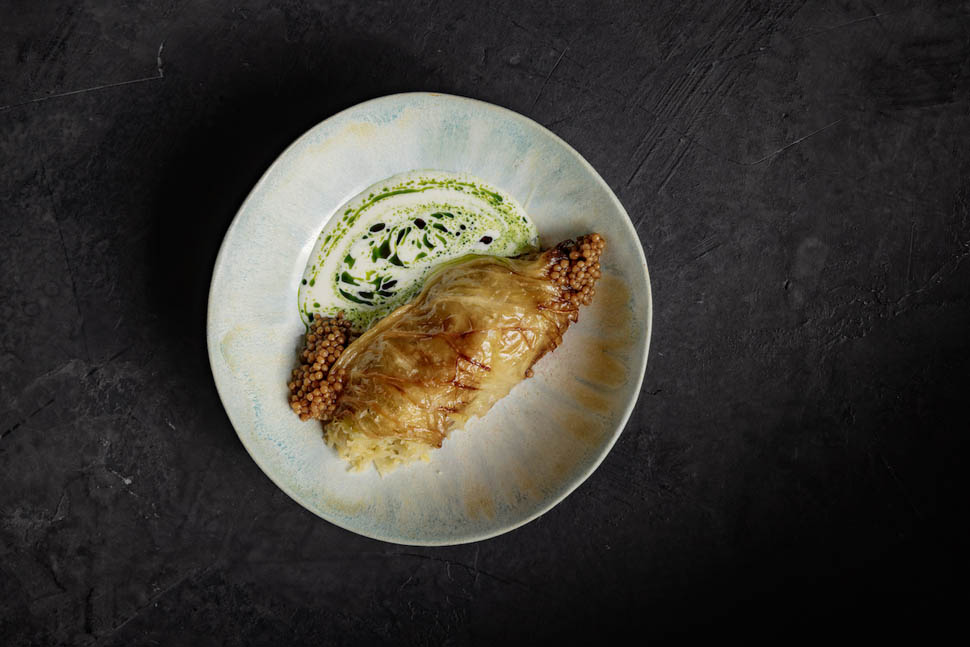
Preparing the sauerkraut
Two weeks before serving, ferment the cabbage: put on gloves, cut the cabbage into quarters and julienne each quarter as finely as possible.
Use a kitchen scale to weigh the chopped cabbage, then use a gram scale to convert 2.5 percent of the weight of the cabbage to kosher salt (i.e., you will need to use 2.5 grams of salt for every 100 grams of cabbage).
Place the cabbage and salt in a large bowl and massage the “shreds” with gloved hands for 10 minutes.
After 10 minutes, transfer the salted cabbage to an airtight ceramic or glass container.
Place additional glass or ceramic lids on the cabbage inside the container to press it down, then seal the container tightly.
Store the sealed container in a cool, dark place (13-18 °C).
Check the cabbage every three days to make sure it is not contaminated with mold. If you detect suspicious colors or odors, discard the sauerkraut and try again. Once completed, you can store the sauerkraut in the refrigerator covered with liquid for up to 3 months.
For the browned and roasted cabbage
Preheat the oven to 160 °C (350 °F).
Cut the cabbage in half, then cut each half into 4 wedges. Cut smaller wedges if the cabbage is very large or if you are serving it as a side dish.
Grease a wide-bottomed skillet with the grapeseed oil.
Heat the grapeseed oil over medium-high heat until it starts to sizzle.
When the grapeseed oil is hot, remove the pan from the heat.
Arrange the cabbage wedges in the pan (be careful not to overfill), then put the pan back on the heat.
Brown the cabbage, occasionally pouring a tablespoon of oil from the bottom of the pan over the cloves to drizzle them as they cook, about 7 minutes.
Add the garlic and thyme to the skillet.
Once browned well, turn the cabbage cloves with tongs.
Add more grapeseed oil to the pan, if needed, and continue to check the cabbage every 10 minutes until all edges of the cloves are browned.
Once the browning of the first batch of cabbage is finished, transfer the cloves to a baking sheet.
Repeat this browning process with the remaining portions of cabbage.
Once all the browned cabbage is in the baking dish, roast the cloves in the oven, without a lid, until the pieces are fully cooked, but not mushy, for 20 to 30 minutes. Smaller cloves will cook faster, so check the texture of the cabbage every 10 minutes or so.
For the parsley oil
Pour 50 grams of grape seed oil into the container of a blender, then add all the parsley.
Pour the remaining grapeseed oil over the parsley.
Start the blender on low speed, then gradually increase the speed until the parsley is reduced to tiny “particles,” about 5 minutes.
The parsley fragments should separate in the oil.
Cover a chinois or fine-mesh strainer with a coffee filter and place it over a large bowl.
Slowly pour the parsley oil into the coffee strainer and let it sit until all the liquid has been strained out.
For the pickled mustard seeds
In a large pot over medium heat, cover the yellow mustard seeds with cold water.
Let simmer for 5 minutes.
After 5 minutes, strain the mixture through a fine-mesh strainer.
Repeat this blanching process with cool water until the mustard seeds have softened and lost their bitter taste, at least 10 times.
In a medium-sized saucepan set over medium heat, stir together the champagne or rice vinegar, sherry vinegar, sugar, and kosher salt.
Add the softened mustard seeds to the pan and bring the mixture to a boil, stirring occasionally, until the liquid has been absorbed by the mustard seeds, about 15 minutes.
After 15 minutes, transfer the mixture to a sealable jar or container and let it cool in the refrigerator for at least 2 hours. Pickled mustard seeds will keep in the refrigerator for up to 1 month.
For the parsley oil crème fraîche sauce and dish composition
Squeeze the liquid from 4 tablespoons of sauerkraut into a small bowl and set aside. (You will need this fermented cabbage juice to make the parsley oil crème fraîche sauce.)
Pour the sauerkraut into a medium-sized pot, placing it on the stove over medium heat.
Simmer until the sauerkraut becomes tender, stirring occasionally for about 15 minutes. Keep the sauerkraut warm over low heat while you prepare the rest.
In another medium-sized pot set over low heat, simmer the fermented cabbage juice.
Add the crème fraîche and cook until the mixture becomes hot.
Add the sherry vinegar and the juice of 1 lemon wedge.
Season to taste with fleur de sel or kosher salt and black pepper.
Once the oil is stirred in, remove from heat and let it sit until ready to serve.
Season the cooked sauerkraut with sherry vinegar, lemon juice, fleur de sel or kosher salt, and black pepper.
Add 2 tablespoons of parsley oil to the crème fraîche sauce and whisk quickly, but do not mix the two ingredients completely. The oil should have spread throughout the sauce.
To serve, arrange a piece of browned and roasted cabbage in the center of each plate.
Add a generous spoonful of sauerkraut near one end of the roasted cabbage and 2 teaspoons of pickled mustard seeds on either side of the cabbage.
Pour about 2 tablespoons of parsley oil crème fraîche sauce on one side of the roasted cabbage, hemisphere style.

